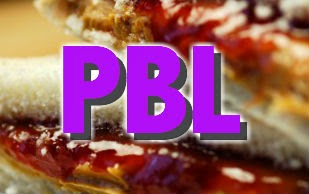Photo Credit: fishbrain.randy@sbcglobal.net
I was meeting with a team of teachers brainstorming what their school would look like in 2020. This team has been developing concepts for a Design Learning Center, where students can follow a Design Thinking model to show 21st Century skills, and the 4C's: critical thinking, collaboration, communication and creativity.This discussion reminded me of reading John Larmer's blog post, Project-Based Learning vs. Problem-Based Learning vs. X-BL The room of teachers were broken down into 3 groups: Specialist teachers, Upper Elementary teachers, and Lower Elementary teachers. When I was talking with the teachers, there seemed to be two schools of thought: PBL and PBL. They both thought PBL, but didn't really understand that they were talking about similar, but not the same idea.
These ideas are Project Based Learning and Problem Based Learning.
The Specialist teachers seemed to show more of a collaborative approach, with the Project Based Learning model. Their ideas were to collaborate, and develop whole school projects. They were discussing ideas about how the school could create a community garden or creating a school play, bringing working collaboratively across the school and local community. Building in concepts that each area of study can contribute.
Where the Upper Elementary Teachers approached the topics more with a subject based lens, and their ideas followed more of the Problem Based Learning model. These teachers were looking how to bridge the curriculum through thematic units, that tackled problems that could be taught across the grade level.
The 3rd Group, the Lower Elementary teachers tended to lean toward a more blended approach. They were also very concerned that adequate time needs to be spent on the basics, so the learners have the skills to communicate their ideas.
The Lower Elementary teachers are normally not concerned with Multidisciplinary studies, because that is what they do best. Shifting from one type of learning to another happens all the time in Lower Elementary classrooms.
This group was concerned with how to scaffold the problems for their learners, so they can communicate their ideas effectively. At the end of the task, all the teachers were concerned with how to best engage their learners with their curriculum.
Understanding how PBL (whichever version you like) can add variety and show new ways for students to showcase their new learning.

